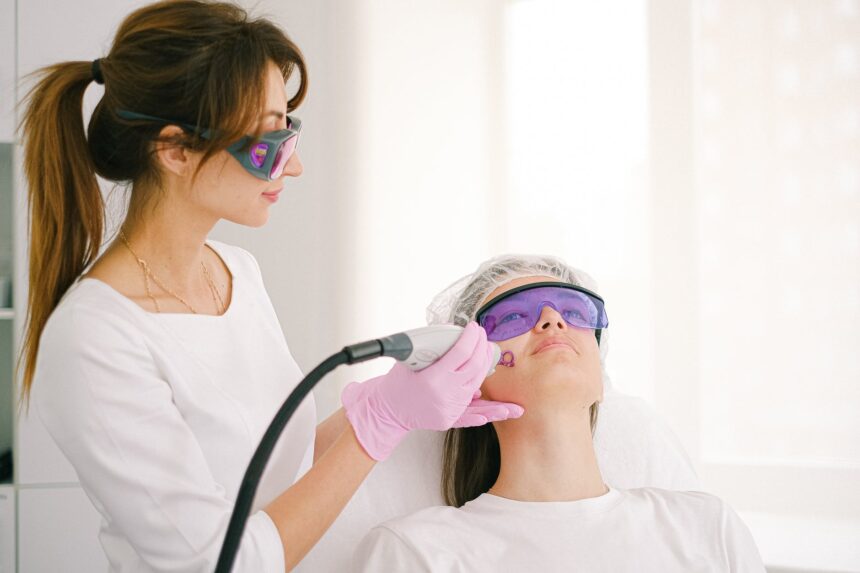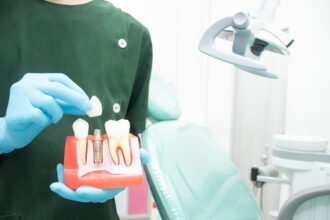At some points, people experience dark under-eye circles. This condition may result from poor blood circulation beneath the eyes or the presence of excess melanin. The latter tends to cause hyperpigmentation when secreted in excessive amounts. Other factors like lifestyle and aging play specific roles in creating dark circles. If there is a lack of the flow of blood and lymphatic liquid within the eye region, the individual may experience vascular dark circles. In some cases, the effects are mild, while others can be severe.
Laser treatments are effective in addressing dark circles below the eyes. There are several laser options. Each of them has its merits and demerits. For ablative lasers, garnet laser procedure and carbon dioxide (CO2) laser procedure are most people’s go-to options. On the other hand, non-ablative laser treatment may include the use of Q-switched laser, pulsed dye lasers, and fractional lasers.
How Effective Are Lasers in Treating Dark Circles?
The quality of results seen after a laser treatment depends on the laser device’s pulse features, wavelength, and radiant exposure. In treating dark circles, the laser light produced may be of low or high intensity, which is focused on the targeted area. The type of dark circle being treated also determines the effectiveness of the procedure. Here is a breakdown of the classification of dark circles.
- Vascular dark circles. This condition comes with different hues of discolouration. They include pink, blue or purple. Additionally, the area may experience puffiness.
- Pigmented dark circles. This condition comes with brown discolouration.
- Mixed dark circles, stemming from a combination of vascular, pigmentation, and structural conditions.
A certified dermatologist will recommend the ideal laser treatment option by examining the type of dark circles present.
It will suffice to state that laser procedures are effective in treating dark circles. They can reduce hyperpigmentation, rejuvenating the skin cells by heating the treatment area. Before undergoing treatment, the doctor knows the type of treatment option to use, either ablative or non-ablative. The former treats the affected part, removing the layers with excessive melanin. There is also stimulation of the blood vessels beneath the epidermis. On the other hand, non-ablative procedures provide the skin with firmness by stimulating the production of collagen in the treatment area.
Ideal Candidates for Treatment
Dark circle laser procedures have minimal side effects and are ideal for many individuals. However, people with darker skin tones may experience adverse effects related to pigment alteration. These conditions are more likely to occur when undergoing ablative laser treatments than non-ablative options. Lasers with high-density and high-energy lights are highly effective in treating dark circles. However, they may leave skin discolouration effects unintentionally.
There is also a likelihood that these individuals experience rebound hyperpigmentation. This condition occurs when dark circles reappear in the eye region after treatment. For this reason, there may be limitations to the type of lasers available for the procedure. But with the expertise and experience of a highly-trained and certified dermatologist, working with laser devices on dark skin tones should pose little or no challenge.
The patient has a role to play by seeking professional guidance before undergoing treatment. During the consultation, the doctor addresses factors, like sensitivity to determine the laser type and intensity that is ideal in treating dark circles.
Dark Circle Laser Treatment Procedure
On the treatment day, the dermatologist applies a topical anaesthetic or numbing cream to the targeted area to give the patient comfort during the session. Once done, this specialist passes a long device under the eye, covering one small area per time as the treatment proceeds. Some effects experienced may include inflammation or flushing. These physical changes fade quickly. The specialist repeats the process across the lower eye region. The average treatment time is one hour.
It is worth noting that the eyes are prone to laser damage. As such, safety is a top priority. Avoid seeking the services of a non-certified dermatologist when treating dark circles. Additionally, adhere to pre-treatment and post-treatment instructions. The professional will, most likely, recommend the use of eye protection during the procedure.
Post-Treatment Care
Once the procedure is complete, the dermatologist provides the patient with instructions to follow to reduce complications and ensure long-lasting results. Interestingly, dark circle laser treatment is minimally invasive and has less downtime. But the recovery rate may vary based on the individual and the treatment option. Kindly note that ablative procedures come with more side effects, compared to its counterparts. Also, the recovery duration is longer than the other as well. The reason for this is based on the fact that the treatment involves the removal of skin layers. On the other hand, non-ablative treatment penetrates the epidermis, addressing the tissues beneath it.
The recovery rate may take a few days – three days tops. During this period, the patient must rest. In rare cases, it takes longer than that. The individual may experience flushing, itching, and swelling in the treated area. Non-ablative treatments take a few hours of downtime, after which, the patient can return to normal work activities. Medical practitioners recommend less exposure to sunlight to reduce the risk of skin damage. And when outside, patients are to use high SPF sunscreens several times daily.
How Much Do Dark Circle Laser Treatments Cost?
Several factors may affect the treatment fee when undergoing a laser procedure. Some of them include the laser type, the dermatologist’s skill and experience, and the clinic’s location. The cost of treating dark circles may range from $300 to $600 per session. For most individuals, the recommended number of sessions is three before the results are fully visible. There is no health insurance coverage for dark circle laser treatments as well. Nevertheless, there are affordable pricing plans.
Bottom Line
Laser technology provides long-lasting solutions in treating dark circles beneath the eyes. There are several procedures available to address the type of dark circle experienced. The certified dermatologist will identify the best option for a patient’s condition using medical records and examination. Using this approach, there will be fewer adverse effects experienced after the procedure.
If the dark circles stem from pigmentation-related problems, patients may undergo garnet, CO2, Q-switched, or fractional laser treatment. In contrastingly, individuals with vascular dark circles are to undergo treatment using a pulsed dye laser procedure. Before option for dark circle laser treatment, discuss with a reputable doctor to find the best option.










